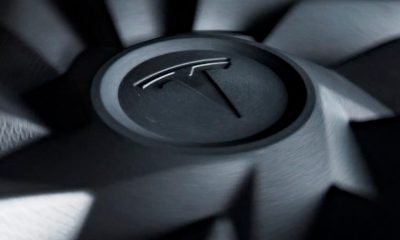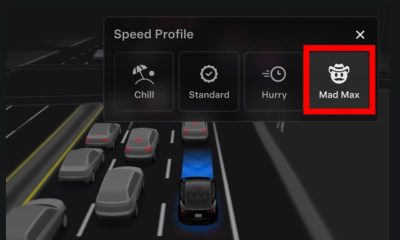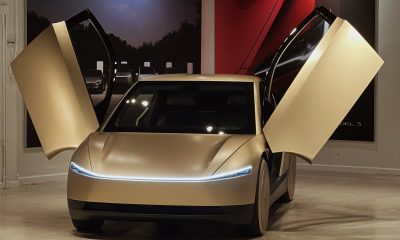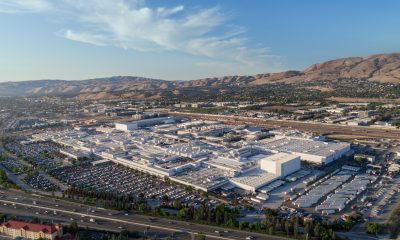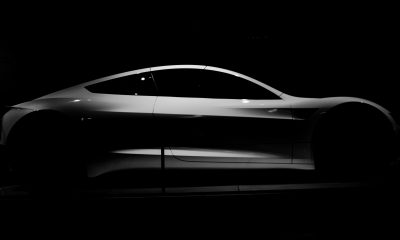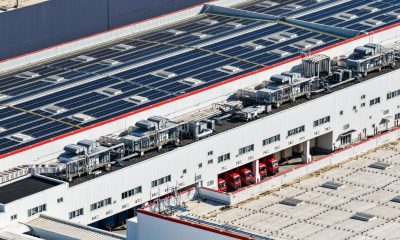News
Tesla produces 100,000th new Model Y in Giga Berlin
The milestone was announced on X.
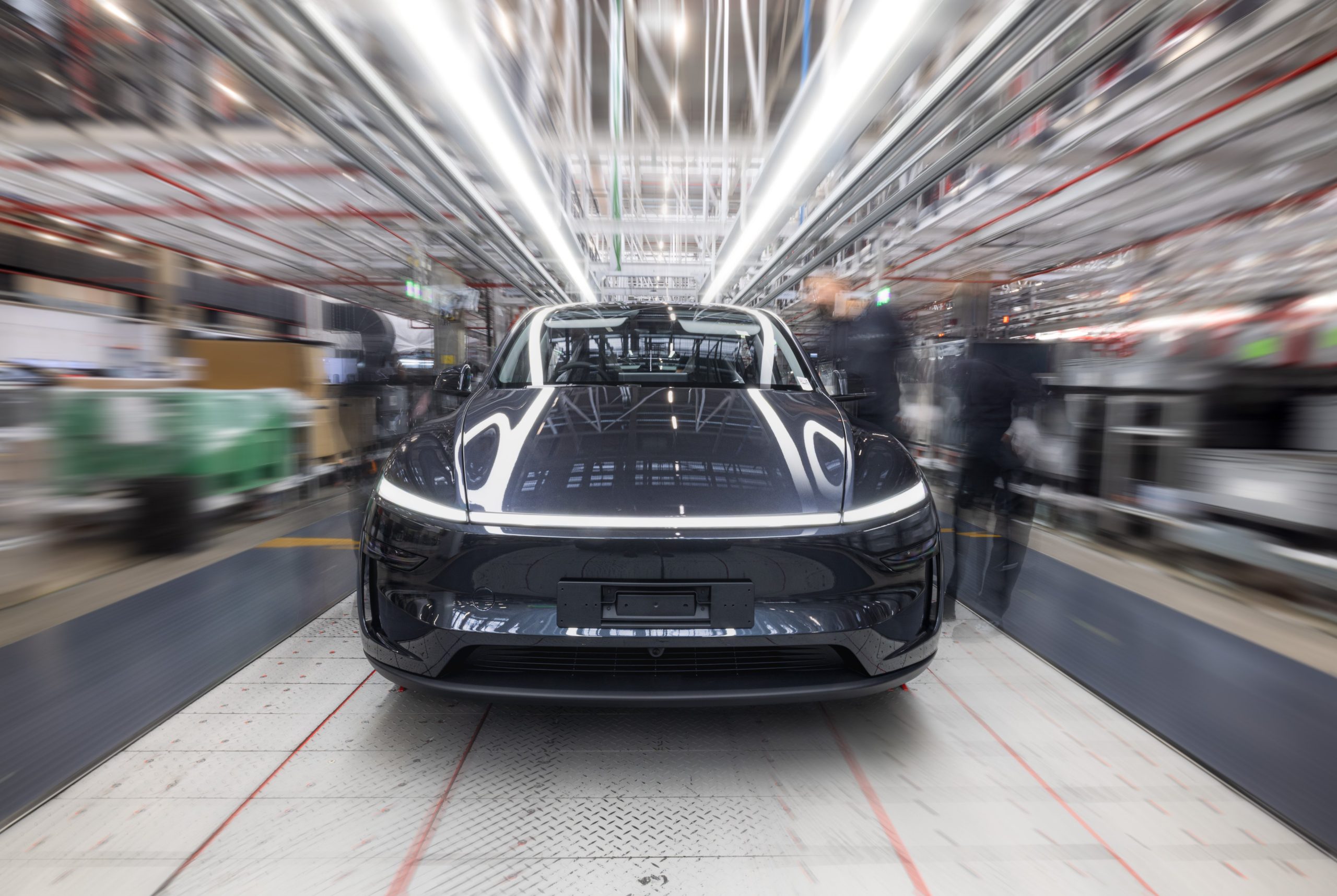
Tesla has produced its 100,000th new Model Y at Gigafactory Berlin. The milestone was announced by the electric vehicle maker through its official Tesla Manufacturing account on social media platform X.
New Tesla Model Y milestone
The milestone was announced by Tesla on X, when the company wrote “Today, we built the 100,000th New Model Y at Giga Berlin!” The announcement was accompanied by an image of a new Model Y coming off the line.
The milestone was received warmly by members of the Tesla community, many of whom expressed excitement at the further progress of the new Model Y program at Giga Berlin. The facility, after all, only produces Model Y units, which would make it the perfect site to produce new variants like the Model Y Performance and possibly even the Model Y L, which was recently launched in China.
New Model Y ramp
As noted in a previous report from electrive, the initial production of the new Model Y started in Giga Berlin around mid-January 2025. Since the new Model Y involved a changeover from the legacy Y to the new variant, the ramp of the new Model Y’s production at the Germany-based facility was likely a gradual process over the past months.
It would then be no surprise if the next 100,000 new Model Y units would be produced in Giga Berlin in a shorter period. Giga Berlin could become an even bigger factor in Tesla’s global sales, after all, especially if it becomes the site that produces the Model Y Performance and the Model Y L for Europe and other territories. Giga Berlin, if any, seems to be quite busy recently, with aerial videos of the facility showing a fleet of mysteriously covered Model Y units being stored within the complex.
Elon Musk
Tesla board chair reiterates widely unmentioned point of Musk comp plan
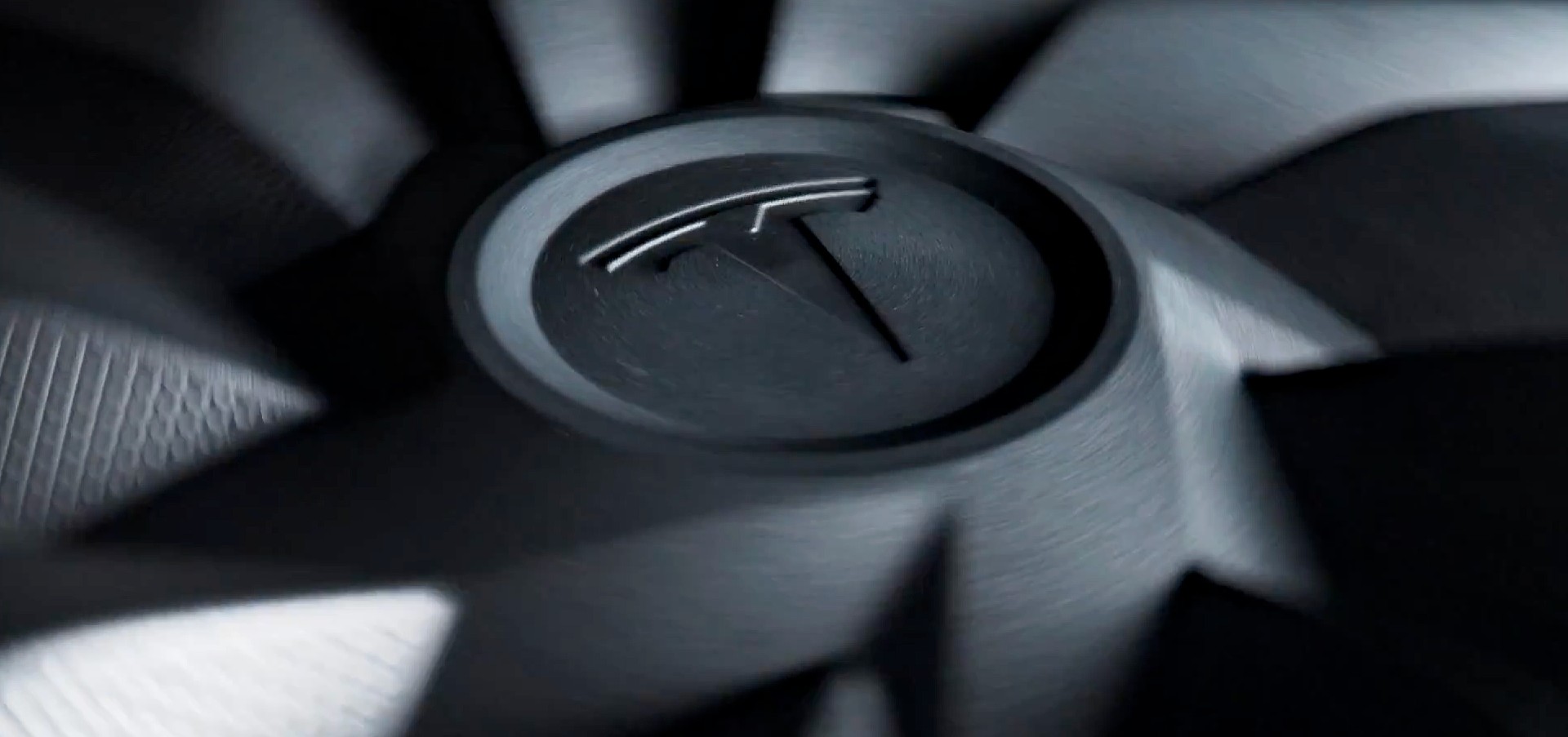
Tesla Board Chair Robyn Denholm appeared on Bloomberg TV this morning to discuss the current status of CEO Elon Musk’s compensation plan, and used the opportunity to reiterate a widely unmentioned key point of the entire package.
Critics of the proposed pay package, which would pay Musk $1 trillion if he completes every tranche, routinely cite the sheer size of the payday.
Of course, many skeptics leave out the fact that he would only get that money if he were able to generate eight times the value the company currently has.
Tesla gains massive vote of confidence on compensation plan for Elon Musk
For Musk, it might have a little bit to do with money, but that is likely a very small percentage point of why the compensation package is being offered to him. He has reiterated that it is more about voting control and overall influence, especially as Tesla dives into robotics.
He said during the Q3 Earnings Call:
“My fundamental concern with regard to how much voting control I have at Tesla is if I go ahead and build this enormous robot army, can I just be ousted at some point in the future? That’s my biggest concern. That is really the only thing I’m trying to address with this. It’s called compensation, but it’s not like I’m going to go spend the money. It’s just, if we build this robot army, do I have at least a strong influence over that robot army, not current control, but a strong influence? That’s what it comes down to in a nutshell. I don’t feel comfortable wielding that robot army if I don’t have at least a strong influence.”
Tesla shares the idea that Musk is a crucial part of the company, and without him being awarded the voting control he feels he deserves, he could leave the company altogether.
The company is very obviously feeling the importance of the upcoming vote, as it has advertised and pushed heavily for the comp plan to be approved, mostly to retain Musk.
Tesla Board Chair Robyn Denholm said today to Bloomberg TV that it is crucial shareholders understand it is not about Musk’s potential wealth, but more about his influence on company decisions:
“So firstly, it is a performance package, so he gets nothing if he doesn’t perform against the pretty audacious milestones that are part of the performance criteria that’s been outlined by the board in the performance package. So, I think rather than compensation, it’s actually about the performance and the goals that we have for the company as we move forward. And so, for me, it really is about making sure that investors understand that they actually get paid if he hits the milestones before he will…Elon’s been very public, including on last week’s earnings call, about the fact that it’s around the voting influence that he could have in future shareholder meetings as opposed to the economic interests.”
Musk is not an incredibly flashy person. He does not have crazy cars or a massive house to go back to. He spends a lot of his time working and sometimes even sleeps at his office inside the factory.
He recently said he “only has what is needed” because “material possessions were making him weak.”
Material possessions were making me weak, so now I have only what is needed
— Elon Musk (@elonmusk) October 20, 2025
News
The truth about Tesla ‘Mad Max’ mode from an actual user
Some people might see “Mad Max” as an extension of their daily driving.
For me, I did not see it that way. I saw it as a useful tool for certain situations, but it was certainly not something I could compare to my personal driving style.
But that does not mean that it’s wrong.
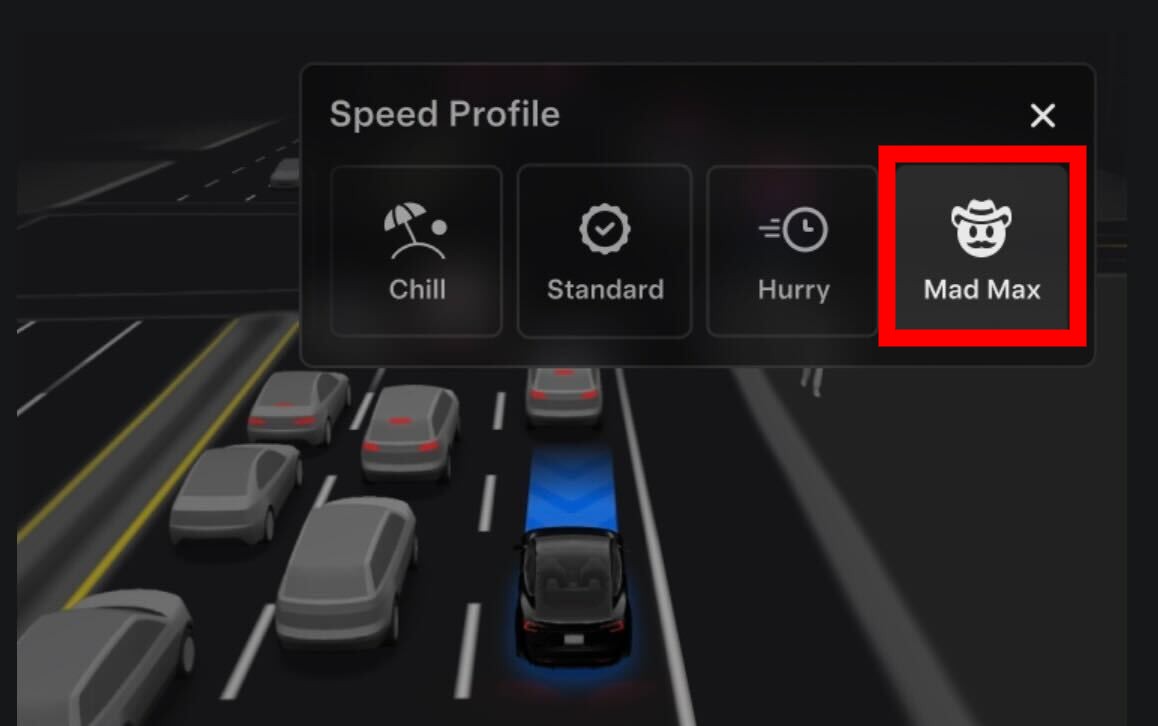
There have been many headlines about Tesla’s new “Mad Max” mode, but many of those writing about the “dangerous” and “controversial” mode have probably never used it.
As a writer, I write about topics I do not have firsthand experience with, but the job requires me to take a fair stance and report what is known. The problem is the nature of driving and driving modes, specifically, is subjective.
Some people might see “Mad Max” as an extension of their daily driving.
For me, I did not see it that way. I saw it as a useful tool for certain situations, but it was certainly not something I could compare to my personal driving style.
But that does not mean that it’s wrong.
NHTSA Probes Tesla Over “Mad Max”
Last week, the NHTSA launched a bit of a probe into Mad Max mode, requesting additional information on the Speed Profile and reiterating that the driver of the car is still required to be in ultimate control.
It’s important to keep the latter portion of that sentence in mind for the true thesis of this piece.
Now, it is no surprise to me that Mad Max garnered attention from regulatory agencies, as it is definitely a more spirited driving profile than the others.
Is Mad Max That Big of a Deal?
Regulatory agencies are responsible for keeping people safe, and it is important to note that their control is somewhat necessary. However, this type of drive mode is optional, requires the driver’s attention, and should be used responsibly for safe travel.
Playing Devil’s Advocate, how is Mad Max any different than the performance modes that some sports cars have? Because they require the driver to operate fully, and they are not semi-autonomous like Tesla can offer with Mad Max in Full Self-Driving (Supervised), are they safer?
The argument here really comes down to whether FSD is being used responsibly and correctly; any accelerated drive mode becomes more of a risk if the vehicle operator is not paying attention. This applies to any car company or drive mode they choose to use on their cars.
My Personal Experience with Mad Max
I have used Mad Max probably ten times since it rolled out to Early Access Program (EAP) members a few weeks ago.
I’ll admit: it did a lot of things I would never do driving a car manually. It passed people on the right. It was the fastest vehicle on the interstate, at least until I crossed into Maryland. Then, it seemed to be just another car on the road.
🚨 Tesla “Mad Max” testing on FSD v14.1.2
It drives like a human being! Consistent lane changes, keeps up with quicker traffic, very refined
Well done Tesla Team pic.twitter.com/wzTucDhczA
— TESLARATI (@Teslarati) October 19, 2025
It drove quickly, and not so fast that I felt concerned for my safety, which I never feared for, but fast enough that, at certain points, I was concerned that a cop would pull me over. I never encountered that scenario, but I wouldn’t be surprised if it resulted in some tickets.
With that being said, I don’t particularly think I’d use Mad Max in more than a handful of applications: driving the Baltimore Beltway would be one instance, navigating traffic in Baltimore, Philadelphia, or Pittsburgh during heavy traffic, or cruising on I-95, where cars routinely are going 100 MPH, much faster than Mad Max would ever travel.
Is it too quick for me in residential settings? For me, yes. Is it faster than every human driving on those roads? Absolutely not. In my experience, it is quicker than some, slower than others, just like any other Speed Mode Tesla offers, even Sloth, which refuses to go over the posted speed limit.
I think it’s wrong to sit here and act as if Mad Max is some incredibly dangerous and life-threatening hazard. If a driver is uncomfortable with the maneuvers or speed, they do not have to use it. However, it is no different from how many other cars travel on the road; it is far from an anomaly.
Tesla FSD’s new Mad Max mode is getting rave reviews from users
With that being said, it will be interesting to see if the NHTSA does anything about Mad Max, whether it will require Tesla to “nerf” the Speed Profile, or remove it altogether. It’s also important to note that this is my personal experience with Mad Max, and what I’ve experienced might differ from others’.
I would love to hear your thoughts on how Mad Max has driven for you, or your impressions of it.
News
Tesla prepares for full-throttle manufacturing of major product
Tesla has the second quarter of 2026 as its projected start date for Cybercab production. It also plans to launch Semi and Megapack 3 for “volume production” starting next year, which will also be two major contributors to the company.
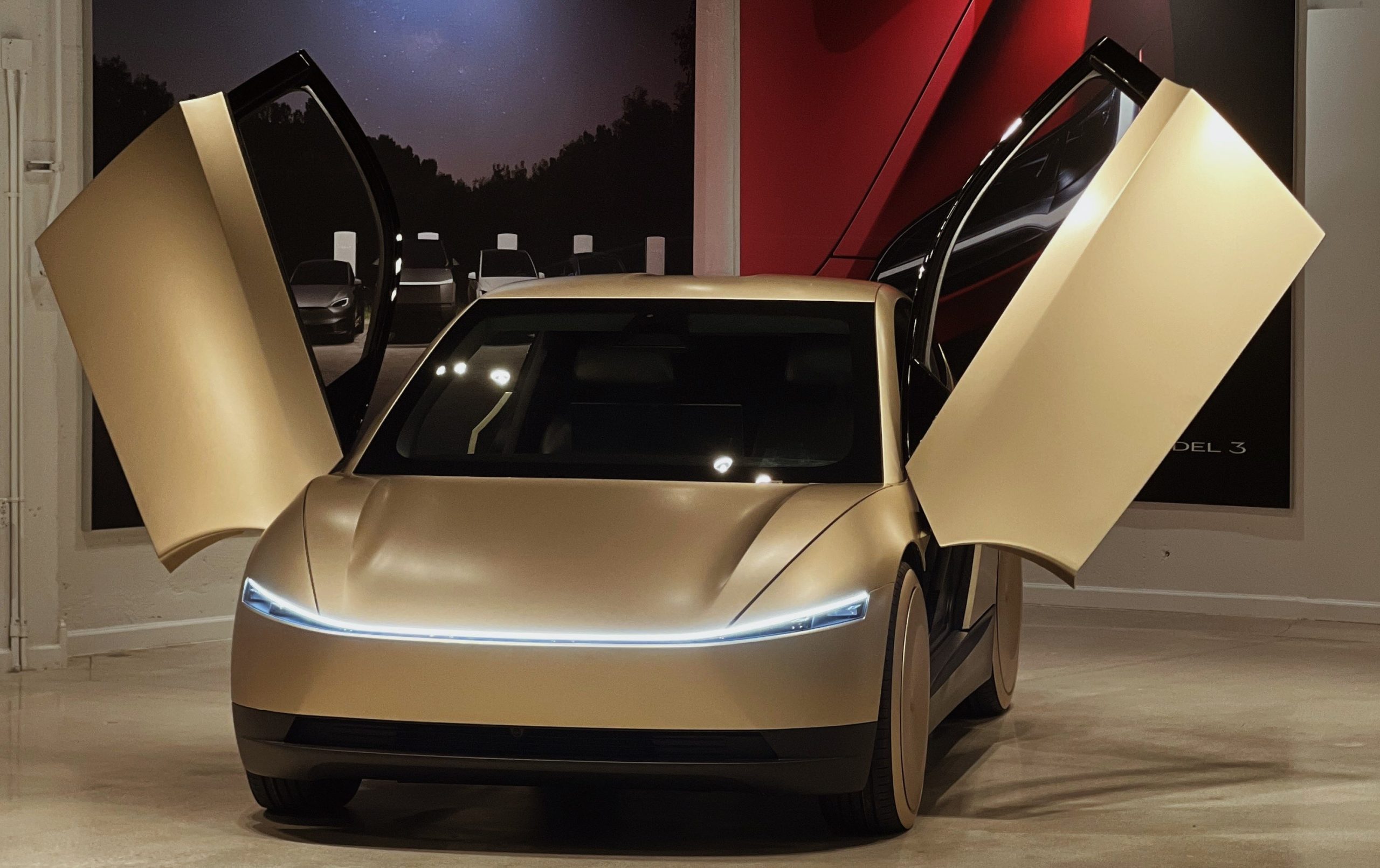
Tesla is preparing for a full-throttle manufacturing effort of potentially its biggest product in company history, job postings on the company’s website show.
In preparation for its foray into fully autonomous travel, Tesla is gearing up for Cybercab manufacturing with 30 job postings, ranging from repair technicians to manufacturing specialists.
Elon Musk sets definitive Tesla Cybercab production date and puts a rumor to rest
The jobs are all located in Austin, Texas, where the company’s Gigafactory Texas facility is located. This is where Cybercab production is going to take place.
Tesla has made major strides in the Cybercab project over the past few months, including launching the vehicle on the Fremont Test Track in California and conducting crash testing at Gigafactory Texas.
All of these indicate the company is preparing for an imminent production effort of the vehicle, which, as Elon Musk said during last week’s Earnings Call, will be void of a steering wheel or pedals.
Tesla has the second quarter of 2026 as its projected start date for Cybercab production. It also plans to launch Semi and Megapack 3 for “volume production” starting next year, which will also be two major contributors to the company.
Musk spoke in great detail during the Earnings Call last week about Cybercab’s potential to change the grand picture of the automotive market, comparing other vehicles in the Tesla lineup to “a little bit of the horse-carriage thing.”
He said:
“That’s really a vehicle that’s optimized for full autonomy. It, in fact, does not have a steering wheel or pedals and is really an enduring optimization on minimizing cost per mile for fully considered cost per mile of operation. For our other vehicles, they still have a little bit of the horse carriage thing going on where, obviously, if you’ve got steering wheels and pedals and you’re designing a car that people might want to go very direct past acceleration and tight cornering, like high-performance cars, then you’re going to design a different car than one that is optimized for a comfortable ride and doesn’t expect to go past sort of 85 or 90 miles an hour.”
Cybercab production is imminent, given the job postings and the company’s proposed timeline for manufacturing to begin. Of course, there is always the potential that Tesla is late to the party, as it has been with other projects.
-

 Elon Musk2 weeks ago
Elon Musk2 weeks agoSpaceX posts Starship booster feat that’s so nutty, it doesn’t even look real
-

 Elon Musk1 week ago
Elon Musk1 week agoTesla Full Self-Driving gets an offer to be insured for ‘almost free’
-

 News1 week ago
News1 week agoElon Musk confirms Tesla FSD V14.2 will see widespread rollout
-

 News2 weeks ago
News2 weeks agoTesla is adding an interesting feature to its centerscreen in a coming update
-

 News2 weeks ago
News2 weeks agoTesla launches new interior option for Model Y
-

 News2 weeks ago
News2 weeks agoTesla widens rollout of new Full Self-Driving suite to more owners
-

 Elon Musk2 weeks ago
Elon Musk2 weeks agoTesla CEO Elon Musk’s $1 trillion pay package hits first adversity from proxy firm
-

 News1 week ago
News1 week agoTesla might be doing away with a long-included feature with its vehicles


